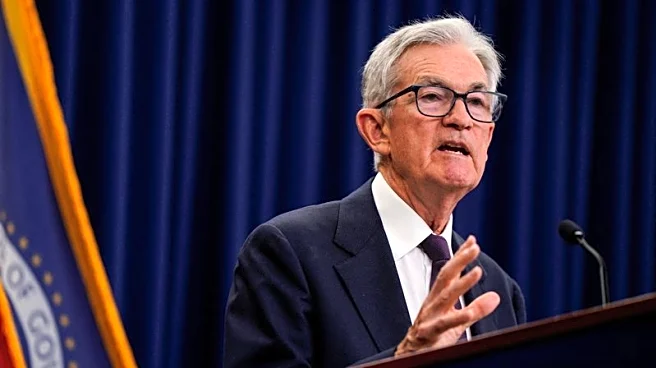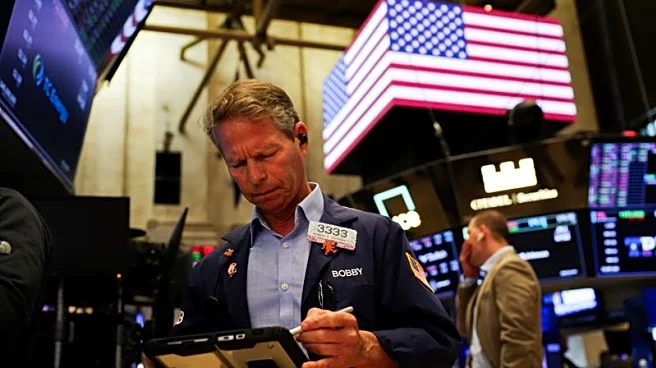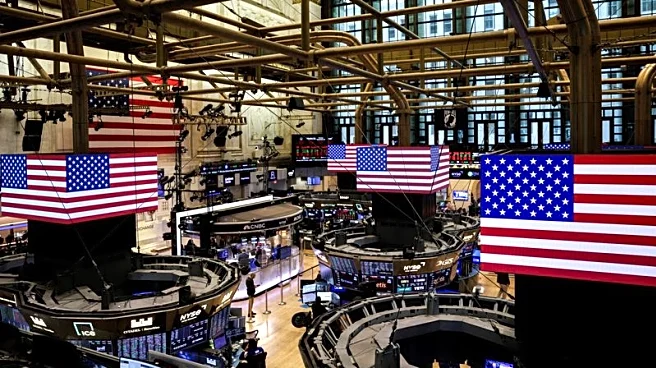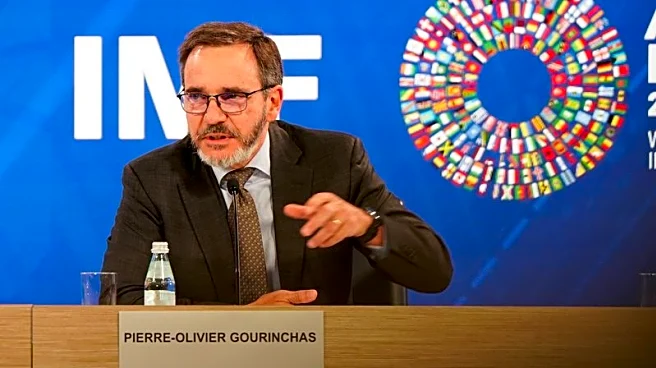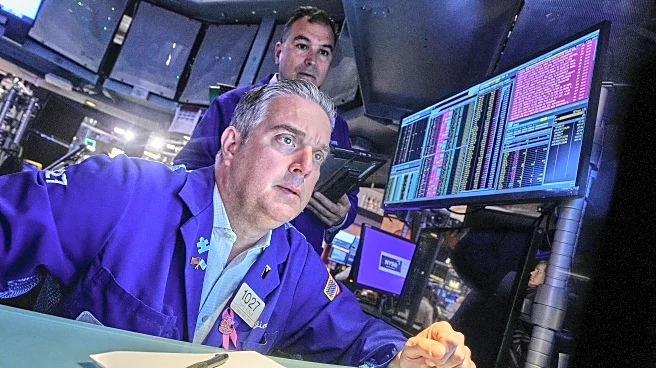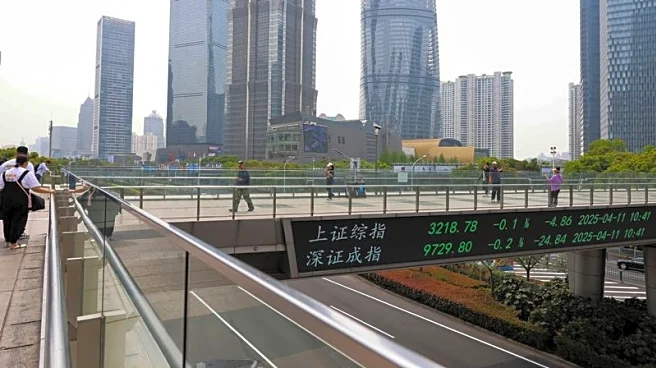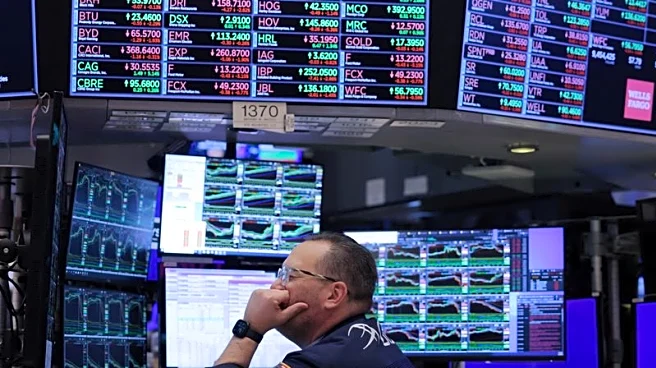What's Happening?
Goldman Sachs economists David Mericle and Pierfrancesco Mei have identified a trend of 'jobless growth' in the U.S. labor market, characterized by modest job growth alongside robust GDP growth. This phenomenon, described by Federal Reserve Chair Jerome Powell as a 'low-hire, low-fire' labor market, is particularly affecting young workers and minorities. The economists attribute this trend to factors such as the impact of artificial intelligence and macroeconomic uncertainties, including tariff regimes from the Trump administration.
Why It's Important?
The concept of 'jobless growth' suggests a shift in the labor market where productivity improvements, driven by AI adoption, outpace job creation. This could lead to fewer opportunities for job seekers, especially in entry-level positions, and slower economic recovery from shocks. As companies focus on using AI to streamline operations, the demand for labor may decrease, posing challenges for policymakers who may need to adjust interest rates and employment strategies to address these changes.
What's Next?
As 'jobless growth' becomes more entrenched, policymakers may face difficult decisions regarding interest rates and employment policies. Central banks might need to keep rates lower to stimulate job creation, while markets could experience mixed effects depending on unemployment levels and the emergence of new job types. The ongoing integration of AI into business operations will likely continue to shape the labor market, requiring adaptation from both workers and employers.
Beyond the Headlines
The long-term implications of 'jobless growth' could include shifts in workforce dynamics, with increased reliance on technology and potential changes in job roles. Ethical considerations around AI's impact on employment may arise, prompting discussions on how to balance technological advancement with job security. Additionally, the trend may influence cultural perceptions of work and productivity, as society adapts to new economic realities.


